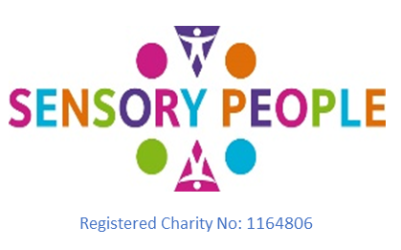The following glossary of terms is included to help parents understand words or phrases commonly utilized in testing or treatment of sensory integrative disorders:
Adaptive response: An appropriate action in which the individual responds successfully to some environmental demand. Adaptive responses require good sensory integration, and they also further the sensory integrative process.
Body image: A person’s perception of his own body. It consists of sensory images or “maps” of the body stored in the brain. May also be called body scheme or body percept.
Brain stem: The lowest and innermost portion of the brain. The brain stem contains centers that
regulate internal organic functions, arousal of the nervous system as a whole, and elementary
sensory-motor processing.
Cocontraction: The simultaneous contraction of all the muscles around a joint to stabilize it.
Dyspraxia: Poor praxis or motor planning. A less severe, but more common dysfunction than apraxia (the lack of praxis), it is often related to poor somatosensory processing.
Extension: The action of straightening the neck, back, arms, or legs.
Flexion: The act of bending or pulling in a part of the body.
Gravitational insecurity: An unusual degree of anxiety or fear in response to movement or change in head position; related to poor processing of vestibular and proprioception information.
Hypersensitivity to movement: Excessive sensations of disorientation, loss of balce, nausea, or headache in response to linear and/ or rotary movement. Response may be delayed up to several hours after receiving the input.
Kinesthesia: Perception of the movement of individual body parts; dependent on proprioception.
Lateralization: The tendency for certain processes to be handled more efficiently on ones side of the brain than on the other. In most people, the right hemisphere becomes more efficient in processing spatial information, while the left hemisphere specializes in verbal and logical processes.
Learning disorder: A difficulty in learning to read, write, compute, or do school work that cannot be attributed to impaired sight or hearing, or to mental retardation.
Modulation: The brain’s regulation of its own activity. Modulation involves facilitating some neural messages to maximize a response, and inhibiting other messages to reduce irrelevant activity.
Nystagmus: A series of automatic, back-and-forth eye movements. Different conditions produce this reflex. Rotary movement followed by an abrupt stop normally produces postrotary nystagmus. The duration and regularity of postrotary nystagmus are some of the indicators of one
aspect of vestibular system efficiency.
Occupational therapy: Occupational therapy is a health profession concerned with improving a person’s occupational performance. In a pediatric setting, the occupational therapist deals with children whose occupations are usually players, preschoolers, or students. The occupational therapist evaluates a child’s performance in relation to what is developmentally expected for that age group. If there is a discrepancy between developmental expectations and functional ability, the occupational therapist looks at a variety of perceptual and neuromuscular factors which influence function. Based on a knowledge of neurology, kinesiology, development, medical diagnoses, and current research, the occupational therapist can identify the children who have the best potential for remediation through occupational therapy.
Perception: The meaning the brain gives to sensory input. Sensations are objective; perception is subjective.
Physical therapy: Physical therapy is a health profession concerned with improving a person’s physical ability. In a pediatric setting, the physical therapist evaluates a child’s orthopedic structure and neuromuscular functions. A physical therapist can also receive special training identical to that received by an occupational therapist to assess and remediate the disorders in sensory processing that influence learning and behavior.
Praxis: (Motor Planning) The ability of the brain to conceive of, organize, and carry out a sequence of unfamiliar actions.
Prone: The horizontal body position with the face and stomach downward.
Proprioception: From the Latin for “one’s own.” Refers to perception of sensation from the muscles and joints. Proprioceptive input tells the brain when and how muscles are contracting and stretching, and when and how the joints are bending, extending or being pulled or compressed. This information enables the brain to know where each part of the body is and how it is moving.
Sensory input: The streams of neural impulses flowing from the sense receptors in the body to the spinal cord and brain.
Sensory integration: The organization of sensory input for use. The “use” may be a perception of the body or the world, or an adaptive response, or a learning process, or the development of some neural function. Through sensory integration, the many parts of the nervous system work together so that a person can interact with the environment effectively and experience appropriate satisfaction.
Sensory Integration and Praxis Tests (SIPT): A series of tests, published in 1989, designed to assess the status of sensory integration and praxis (motor planning) in children ages 4 through 8 years old. The SIPT is a revised and updated version of the original SCSIT.
Sensory integrative dysfunction: An irregularity or disorder in brain function that makes it difficult to integrate sensory input effectively. Sensory integrative dysfunction may be present in motor, learning, social/ emotional, speech/ language or attention disorders.
Somatosensory: Body sensations that are based on both tactile and proprioceptive information.
Southern California Sensory Integration Tests (SCSIT): A series of tests, published in 1972, designed to assess the status of sensory integration or it’s dysfunction. These tests were later revised, updated and republished as the Sensory Integration and Praxis Tests (SIPT).
Specialization: In general, the process by which one part of the brain becomes more efficient at particular functions. Most specialized functions are lateralized, that is, one side of the brain is more proficient in the function than the other side.
Supine: The horizontal body position with the face and stomach upward.
Tactile defensiveness: A sensory integrative dysfunction in which tactile sensations create negative emotional reactions. It is associated with distractibility, restlessness, and behavior problems.
Vestibular system: The sensory system that responds to the position of the head in relation to gravity and accelerated or decelerated movement; it integrates neck, eye, and body adjustments to movement.
